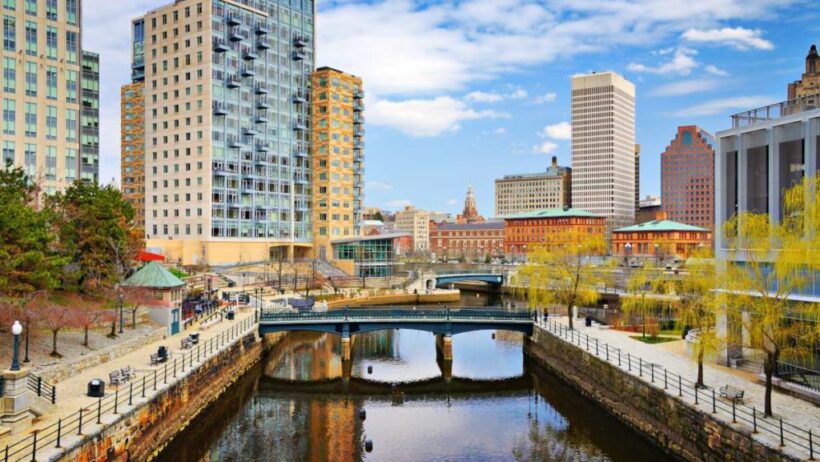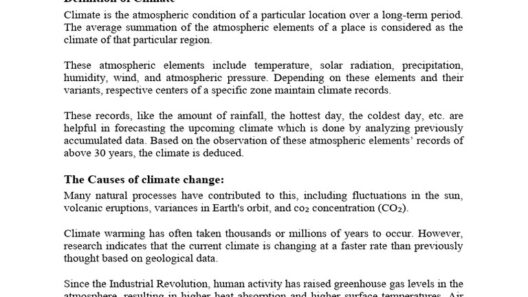Rhode Island, known affectionately as “the Ocean State,” is not only the smallest state in the United States by area but also boasts a climate that presents a tapestry of environmental nuances. Tucked away in the fingers of New England, this petite state enjoys a temperate maritime climate that can be likened to a moody artist—capable of expressing vibrant splashes of sun alongside brooding overcast skies. Understanding the climate of Rhode Island is essential to grasping the broader environmental narrative that shapes this unique area.
The essence of Rhode Island’s climate is predominantly influenced by its proximity to the Atlantic Ocean. This maritime connection plays a pivotal role, wrapping the state in a buffer that moderates temperature extremes, rendering it a comfortable habitat for a diversity of flora and fauna. The balmy summers embrace average high temperatures around 80°F, while the brisk winters bring a chill, with averages plunging to about 25°F. Each season shifts with gravity, the mildness of spring segueing into the sultry heat of summer, followed by autumn’s resplendent hues, only to be shackled by winter’s cold grasp.
As spring dawns upon Rhode Island, the landscape awakens like a shy child emerging from a shell, revealing the delicate blossoms of cherry trees and the vibrant greens of new foliage. This season, from March to May, is characterized by gentle rains that coax life from the earth, creating a balance that benefits agriculture and local ecosystems alike. But it is important to note that these rejuvenating rains are sometimes prone to capriciousness, resulting in erratic weather patterns that confound expectations. They bring with them the potential for flooding—a reminder that nature possesses both grace and ferocity.
Summer transitions the narrative sharply as the sun reaches its zenith. The climate transforms into a lively stage, with daytime temperatures that invite beachgoers and tourists to revel in Rhode Island’s picturesque shores. Coastal breezes offer reprieve from the heat, and the energy of life is palpable—from bustling farmers markets to lively music festivals. However, summer also serves as a harbinger of humidity, occasionally entrenching the state in stifling conditions punctuated by thunderstorms. Such events, while disruptive, are vital in replenishing groundwater supplies, underscoring the interconnectivity of climatic systems and local ecosystems.
Autumn in Rhode Island is akin to an artist’s palette, splashed with crimson and gold as deciduous trees prepare to shed their leaves. The crisp air carries a refreshing scent, signaling the transition to a cooler season. The climate is comfortable at this time, with average temperatures gracefully declining. This season not only highlights the natural beauty of Rhode Island but also signifies the onset of preparations for the coming winter—an intricate dance between the vibrant canvas of nature’s display and the stark realities of the upcoming chill.
Winter, the climactic conclusion to this climatic narrative, envelops Rhode Island in a white blanket that transforms the landscapes into a serene wonderland. Snowfall can be abundant, and temperatures often dip below freezing. Here, one can witness the stark contrast of life—while some animals retreat into hibernation, others, such as deer or certain birds, adeptly navigate the chill. This environment elucidates the resilience of life amid challenges, illustrating a cycle that embodies renewal and perseverance.
Climate change, however, is an insistent specter that looms over this delicate balance. In Rhode Island, rising sea levels threaten coastal habitats, endangering both human infrastructure and the coastal ecosystems that sustain them. With each passing year, increasingly severe weather events—be it intense storms, flooding, or the gradual warming of the ocean—test the resilience of local communities. These environmental shifts necessitate not only awareness but action, prompting stakeholders to innovate adaptive strategies to mitigate impacts.
Additionally, the state’s specific geographic and climatic characteristics render it vulnerable to environmental degradation. As the seasons shift, so do the patterns of precipitation and temperature, leading to challenges such as droughts or excess moisture that can complicate agricultural practices. Farmers are facing new uncertainties as traditional crops struggle against unprecedented weather conditions, demonstrating how deeply intertwined local communities are with the rhythms of nature.
Despite these challenges, Rhode Islanders are aligning their efforts toward sustainability and environmental stewardship. Initiatives aimed at fostering renewable energy solutions and implementing conservation practices illustrate a collective commitment to safeguarding the environment. As they cherish and protect their unique climate and landscape, residents cultivate a sense of hope, akin to the delicate buds of spring that emerge in defiance of winter’s grasp.
In conclusion, Rhode Island’s climate is a stunning chronicle of nature’s dualities, from the gentle embrace of spring rains to the austere embraces of winter. Each season articulates a chapter in a larger narrative, encapsulating both the beauty and the fragility of this compact state. Engaging with this narrative calls for awareness and action, ensuring that the smallest state can continue to thrive in the face of accelerating climate change. Rhode Island, with its multifaceted weather and resilient communities, exemplifies the importance of nurturing our environmental legacy for future generations.








